17 Ways To Make Your Home Emotionally Inviting For Shy Cats

Ever watched a timid kitty peek around corners before darting to the next hiding spot? Shy cats experience the world differently than their bold counterparts, often needing special consideration to feel secure.
Creating a cat-friendly environment isn’t just about toys and treats – it’s about building emotional safety zones where anxious felines can gradually build confidence.
1. Create Elevated Hiding Spots
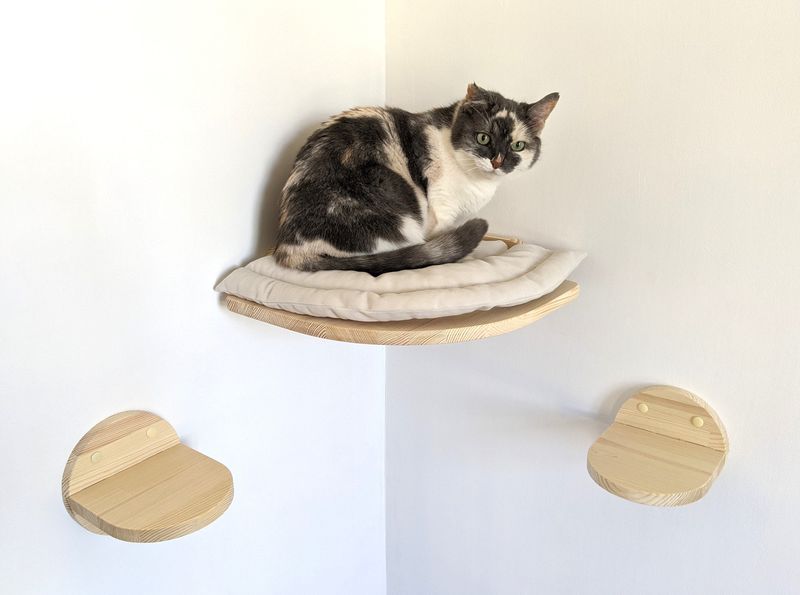
Cats feel safest when they can observe without being seen. Install cat shelves or repurpose bookcases to create vertical territory where your shy kitty can retreat.
These elevated zones become perfect monitoring stations for cautious cats to watch household activities from a comfortable distance.
2. Set Up Cardboard Sanctuaries

Nothing beats a simple cardboard box for instant cat comfort. Cut multiple entrance holes so your shy friend never feels cornered and can escape if startled.
Line these makeshift hideaways with familiar-smelling blankets to create instant security zones throughout your home. The humble cardboard castle costs nothing but provides priceless emotional support for anxious felines adjusting to new surroundings.
3. Establish Predictable Routines

Consistency calms anxious kitties better than almost anything else. Feed, play, and clean litter boxes at the same times daily so your shy cat knows exactly what to expect.
When life follows familiar patterns, your nervous feline friend gradually builds confidence knowing their basic needs will always be predictably met.
4. Offer Feline Furniture Tunnels

Tunnels tap into a cat’s natural love of enclosed spaces while providing essential escape routes. Look for soft fabric tunnels with multiple exits to prevent feeling trapped.
Place these passageways between favorite spots in your home to create protected highways for nervous navigation. Your shy cat will appreciate moving from room to room without feeling exposed during those vulnerable moments of transition.
5. Use Calming Feline Pheromones

Synthetic versions of natural cat calming scents work wonders for anxious kitties. Plug-in diffusers or sprays containing feline facial pheromones send silent “all is well” messages throughout your home.
Many shy cats visibly relax within days of introducing these products. While not a magic cure, pheromones provide background emotional support that helps timid felines feel more secure in their territory.
6. Master The Slow Blink Technique

Cat language includes subtle signals that you can learn too! When making eye contact with your shy kitty, try slowly closing and opening your eyes – it’s cat for “I trust you.”
Many cats respond to this gesture by returning the slow blink. This simple non-verbal communication builds powerful bonds without the pressure of physical contact that might overwhelm a timid feline companion.
7. Provide Scheduled Alone Time

Even social cats need daily solitude, and shy ones require it absolutely. Designate specific hours when your nervous kitty won’t be disturbed by household activities or visitors.
During these quiet periods, avoid vacuuming, loud music, or other startling noises. This predictable downtime allows anxious cats to fully relax without constantly being on alert, gradually building their emotional reserves.
8. Create Window Watching Stations
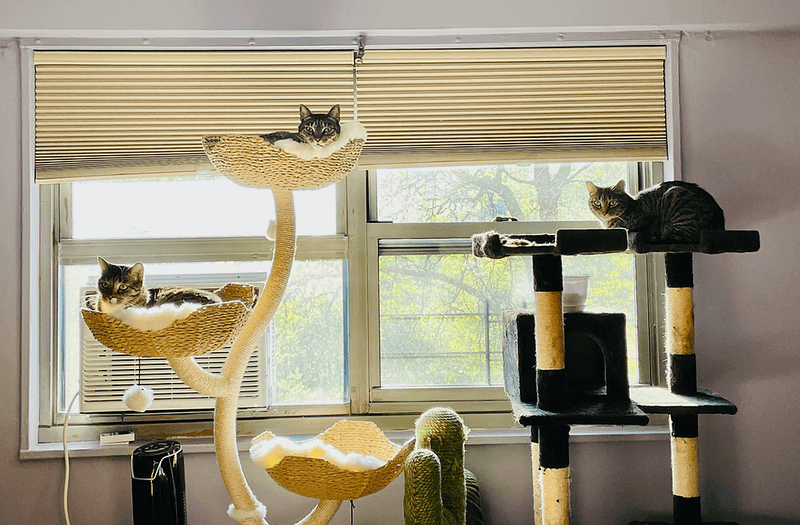
Bird TV captivates even the most anxious cats! Position cozy perches near windows with interesting outdoor views as natural entertainment that doesn’t require human interaction.
Secure window hammocks or place cat trees nearby to encourage safe observation of the outside world. This passive stimulation occupies your shy cat’s mind without overwhelming their senses, providing hours of distraction from indoor anxieties.
9. Use Treat Trails For Gentle Exploration

Food motivation works wonders for encouraging timid cats to venture beyond comfort zones. Create trails of treats leading to new areas you’d like your shy kitty to explore.
Start with treats very close to their safe space, then gradually extend the path. This positive association technique transforms scary new territories into rewarding adventures.
10. Install Baby Gates With Cat Doors
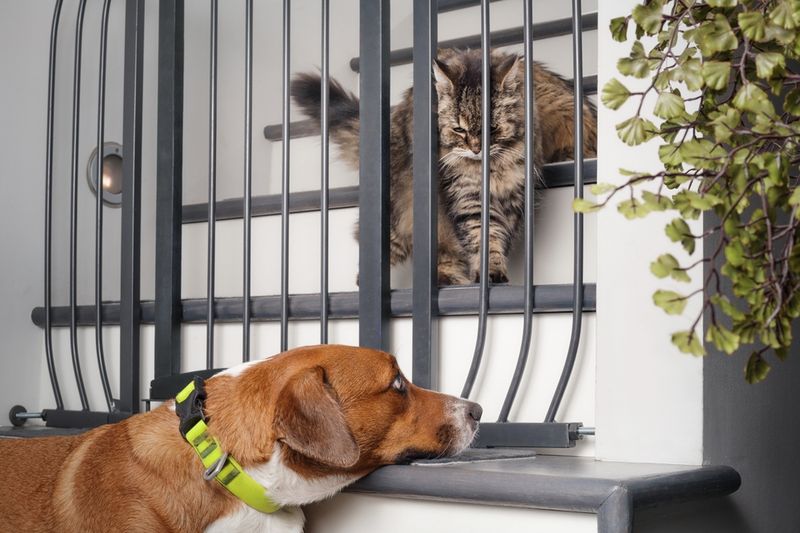
Household chaos can overwhelm sensitive felines in seconds. Baby gates with built-in cat doors create instant escape routes while keeping dogs or children from invading your cat’s private zones.
The ability to easily remove themselves from stressful situations provides crucial emotional security that helps timid kitties gradually build confidence.
11. Embrace The Power Of Playtime

Interactive toys create bonding opportunities without intimidating physical contact. Wand toys with feathers or strings maintain a comfortable distance while engaging natural hunting instincts.
The combination of exercise and positive association with you helps anxious kitties build confidence through successful “hunts” without feeling threatened.
12. Provide Multiple Litter Box Options

Bathroom anxiety is real for shy cats! Offer several litter boxes in different quiet locations so your nervous kitty never feels trapped while doing their business.
Choose boxes with multiple exit points or open designs. Feeling vulnerable during elimination is instinctively stressful for cats, so creating multiple safe bathroom options significantly reduces overall household anxiety for timid felines.
13. Create Scent-Soaked Comfort Items
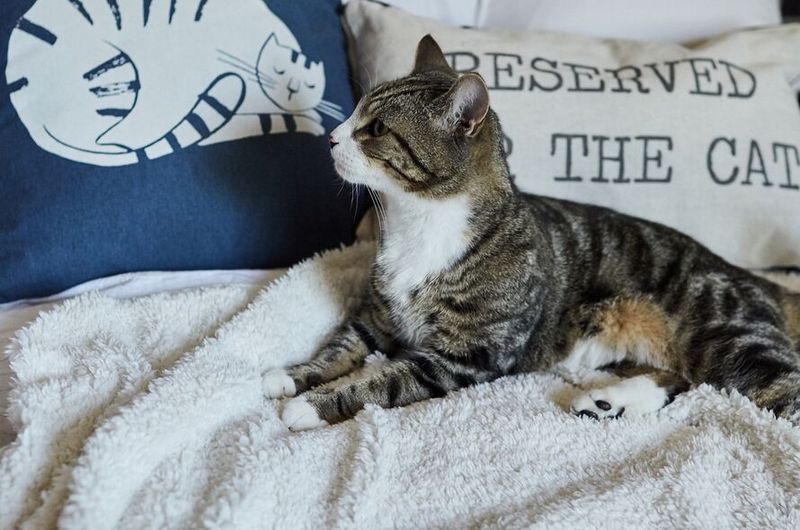
Familiar smells provide powerful security for anxious cats navigating new situations. Rub soft blankets against your shy kitty’s cheeks to collect their scent, then place these items in areas you want them to explore.
This simple technique leverages your cat’s powerful sense of smell to create invisible security blankets throughout your home.
14. Install Nightlights For Evening Confidence

Cats can see in dim light, but complete darkness still limits their vision. Strategic nightlights in hallways, near litter boxes, and along common paths prevent startling midnight encounters.
The gentle illumination helps shy cats navigate confidently after dark without bumping into unexpected obstacles. This simple addition removes one more potential stress trigger, especially important during those vulnerable nighttime hours when the household is quiet.
15. Practice The Art Of Ignoring
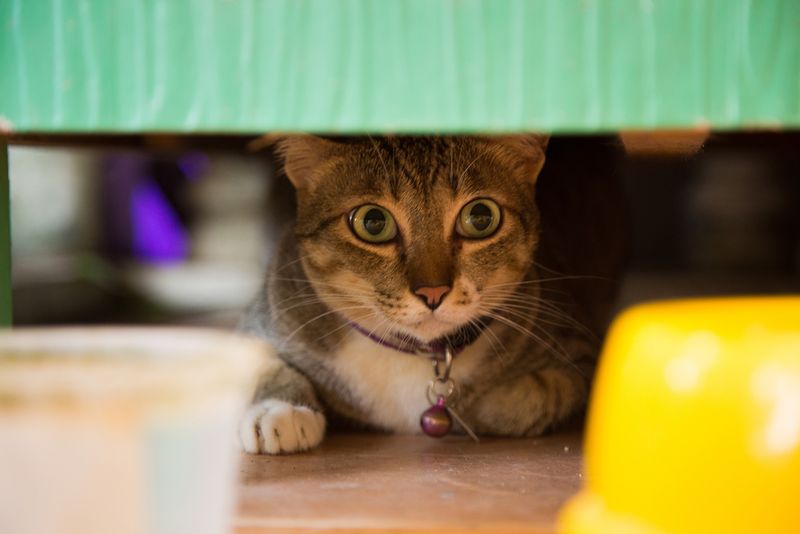
Counter-intuitive but incredibly effective: sometimes the best approach is pretending your shy cat isn’t there. Resist the urge to force interaction or make direct eye contact which feels threatening.
Many shy cats will gradually approach when they realize you aren’t demanding attention, allowing them to investigate you on their own terms.
16. Create Sound Buffers Against Startling Noises
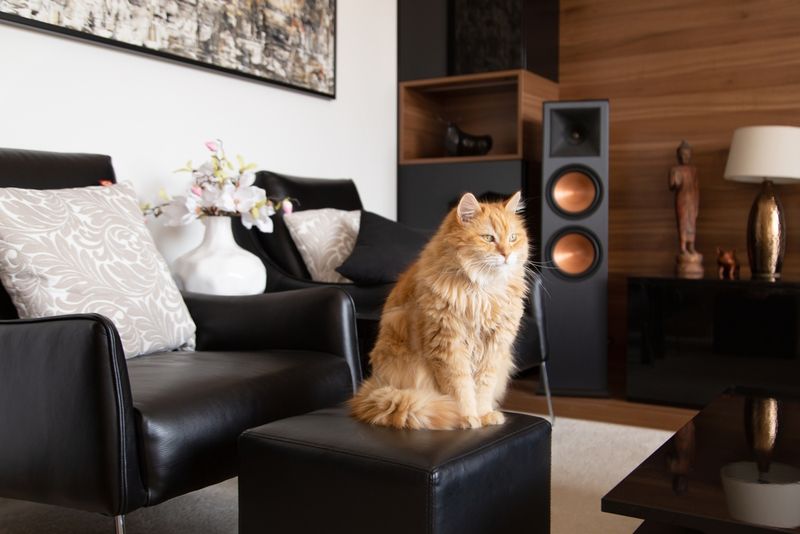
Sudden sounds spell instant panic for sensitive kitties. White noise machines, soft background music, or aquarium bubbles provide consistent audio backdrops that mask startling noises.
Place these sound buffers near your shy cat’s favorite resting spots. The gentle audio camouflage helps prevent those heart-stopping moments when the doorbell rings or something drops, gradually desensitizing anxious cats to household acoustics.
17. Designate No-Handling Safe Zones
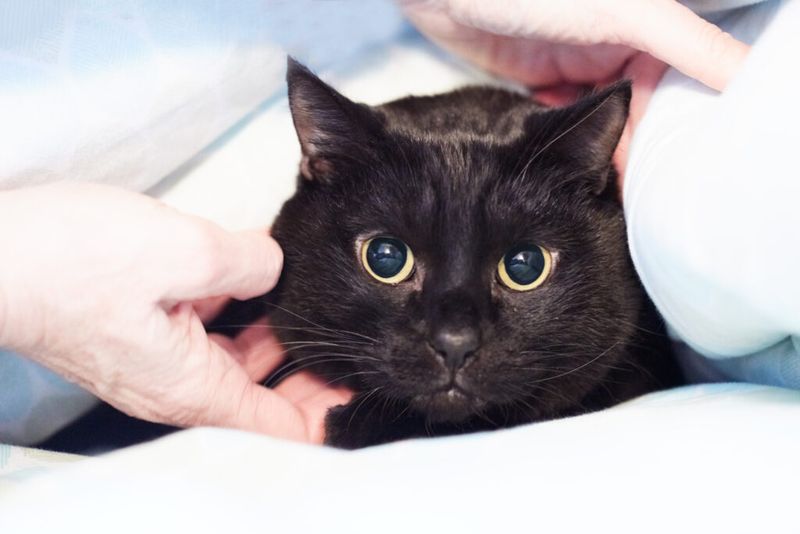
Some spaces in your home should be completely hands-off territories where your shy cat never experiences grabbing or picking up. Clearly communicate these boundaries to everyone in the household, especially children.
When your timid kitty learns certain spots guarantee freedom from handling, they develop confidence exploring beyond their hideaways. This respect for their boundaries builds crucial trust that eventually extends to other interactions.





